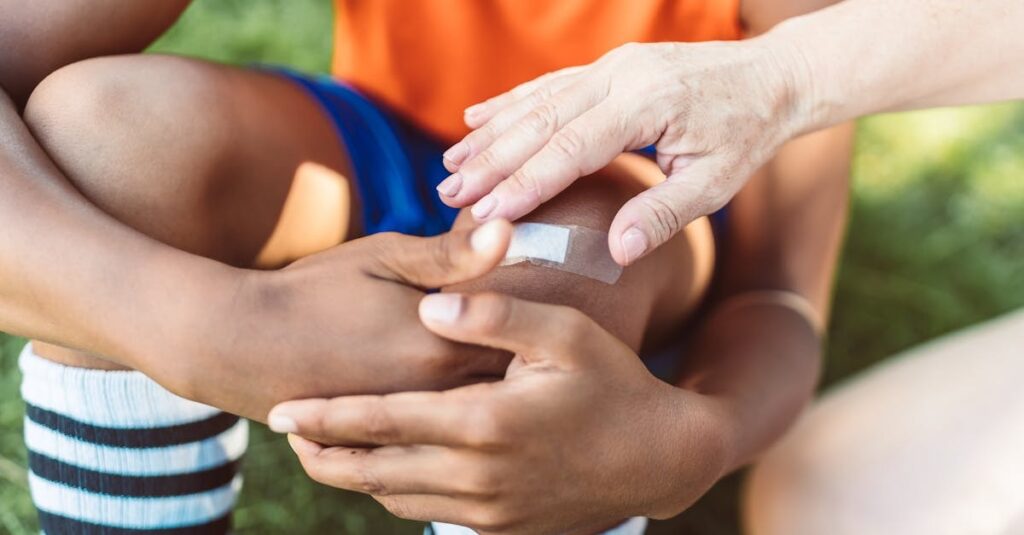A sprained big toe can be a painful setback, affecting mobility and daily activities. Whether it’s from an awkward step or a sports injury, understanding how to properly heal this common injury is crucial. With the right approach, recovery can be swift and effective.
In this guide, readers will discover essential steps to alleviate pain, reduce swelling, and promote healing. From rest and ice therapy to gentle exercises, each method plays a vital role in restoring function to the toe. By following these tips, anyone can get back on their feet and enjoy their favorite activities in no time.
How to Heal a Sprained Big Toe
A sprained big toe occurs when the ligaments connecting the bones in the toe get stretched or torn. This injury can interfere with mobility and everyday activities, making timely understanding and care essential.
Causes Of A Sprained Big Toe
- Trauma: Direct impact on the toe during physical activities, such as sports or accidents, often leads to sprains.
- Overextension: Hyperextension of the toe, commonly seen in sports requiring sudden stops and pivots, can cause significant ligament strain.
- Poor Footwear: Wearing ill-fitting shoes can contribute to inadequate support, increasing the risk of spraining the toe.
- Previous Injuries: Prior incidents of toe injuries may weaken the toe’s structure, making it more susceptible to new sprains.
- Pain: Persistent pain at the site of injury, worsening with movement.
- Swelling: Noticeable swelling surrounding the toe or foot.
- Bruising: Discoloration, such as redness or bruising, may appear on the toe.
- Stiffness: Reduced flexibility or difficulty moving the toe.
- Instability: A feeling of weakness or instability in the toe when standing or walking.
Initial Steps After Injury

Taking immediate action after a sprained big toe promotes better healing and reduces complications. Two crucial methods to apply are the R.I.C.E. method and knowing when to seek medical attention.
R.I.C.E. Method
The R.I.C.E. method stands for Rest, Ice, Compression, and Elevation, and it effectively manages sprains.
- Rest: Limit movement to prevent further injury. Avoid putting weight on the affected toe.
- Ice: Apply ice packs for 15-20 minutes every 1-2 hours to reduce swelling and numb pain.
- Compression: Use an elastic bandage to wrap the toe snugly. Compression supports stability and minimizes swelling.
- Elevation: Keep the injured toe elevated above heart level. This position aids in reducing swelling and enhances blood circulation.
Proper application of the R.I.C.E. method within the first 48 hours enhances recovery outcomes.
When To Seek Medical Attention
Certain signs indicate that professional medical assessment is necessary.
- Severe Pain: Persistent, intense pain that does not improve with home treatment may signal a more serious injury.
- Inability to Move: If movement is impossible, further evaluation is essential to rule out fractures.
- Significant Swelling: Excessive swelling that doesn’t subside with R.I.C.E. treatment warrants a visit to a healthcare provider.
- Deformity: Visible misalignment or any deformity in the toe needs immediate medical attention to prevent long-term issues.
Recognizing these symptoms helps in making informed decisions on when to consult a healthcare professional for appropriate care.
Treatment Options
Multiple treatment options exist to effectively manage a sprained big toe. Approaching the recovery process with appropriate methods helps restore function and reduce discomfort.
Home Remedies
Home remedies can provide effective relief and support healing. He, she, or they can utilize the following methods:
- R.I.C.E. Method: Resting the toe while using ice packs on the area reduces swelling and alleviates pain. Applying ice for 15-20 minutes every hour during the first two days fosters healing.
- Compression: Wrapping the toe with an elastic bandage helps minimize swelling. Ensure the bandage isn’t too tight to avoid further restriction of blood flow.
- Elevation: Keeping the foot elevated above heart level minimizes swelling. Using pillows while resting or sleeping assists in maintaining elevation.
- Epsom Salt Soaks: Soaking the affected toe in warm water with Epsom salt can reduce inflammation. He, she, or they should soak for about 15-20 minutes.
- Pain Relievers: Over-the-counter medications such as ibuprofen or acetaminophen provide relief from pain and discomfort. Following dosage instructions promotes safe usage.
Physical Therapy
Physical therapy plays a crucial role in the recovery process, especially after the initial inflammation subsides. Engaging in physical therapy offers multiple benefits:
- Tailored Exercise Programs: A physical therapist can design a program targeting strength and flexibility for the toe. Specific exercises may include toe stretches, range-of-motion activities, and balance training.
- Manual Therapy: Licensed professionals may utilize manual techniques to restore motion to the toe joint. These techniques help ease stiffness and improve overall mobility.
- Education: Physical therapists provide education on proper footwear and techniques to avoid reinjury. Understanding body mechanics enhances long-term recovery.
- Progressive Load: Gradually increasing weight-bearing activities ensures proper healing. Following a therapist’s guidance promotes safe reintegration into normal activities.
These treatment methods support healing and enable individuals to resume their daily activities.
Prevention Tips
Preventing a sprained big toe involves practical measures that enhance foot health and stability. Simple strategies can significantly reduce the risk of injury during activities.
Proper Footwear
Choosing the right footwear is crucial for foot protection. Supportive shoes provide stability and minimize excessive movement. Look for shoes with adequate toe box space, cushioning, and arch support. Avoid high heels and overly tight shoes that can strain the toe. Regularly inspect shoes for signs of wear and replace them as needed to ensure optimal support.
Stretching And Strengthening Exercises
Engaging in stretching and strengthening exercises enhances flexibility and resilience in the toe and surrounding muscles. Perform exercises such as toe stretches, calf raises, and ankle circles regularly. These activities improve range of motion and prevent tightness. Strength training for the foot, including picking up marbles or towels with toes, promotes muscle strength and stability. Consistent practice of these exercises helps maintain overall foot health and reduces the likelihood of spraining the big toe during activities.
